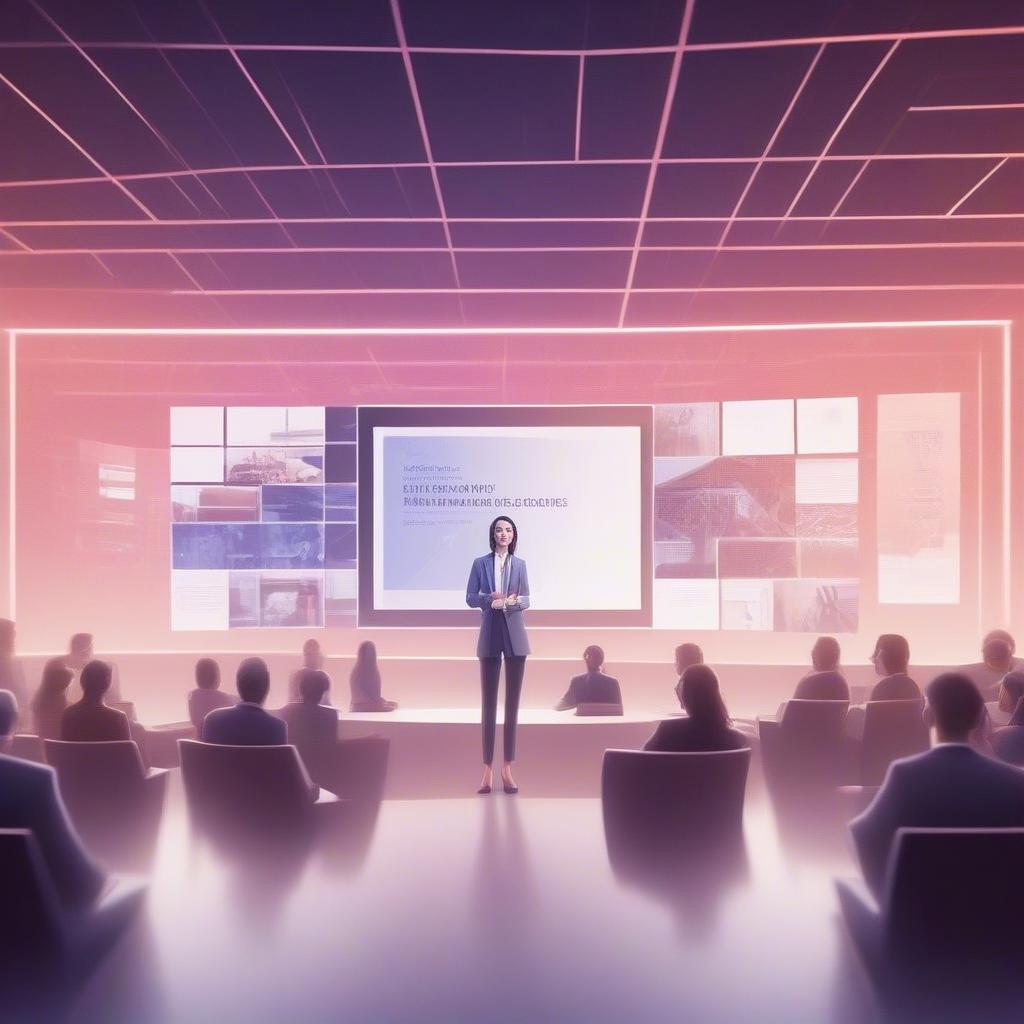
A well-designed agenda is the backbone of a successful seminar. It’s the roadmap that guides attendees through the learning journey, keeps them engaged, and ensures they extract maximum value from the event. But crafting a captivating and effective seminar agenda is an art. This guide provides a comprehensive approach to seminar planning, ensuring your corporate events leave a lasting positive impression. Let’s dive into the secrets of creating an engaging event agenda.
Why Your Seminar Agenda Matters More Than You Think
The agenda isn’t just a schedule; it’s a promise to your attendees. It tells them what to expect, how their time will be used, and ultimately, whether their investment (time, money, energy) will be worthwhile.
- Sets Expectations: A clear agenda manages expectations from the outset, preventing disappointment and fostering trust. Attendees know exactly what they’re signing up for.
- Drives Engagement: A well-structured agenda incorporates interactive elements, breaks, and diverse learning methods, keeping attendees actively involved.
- Ensures Focus: A focused agenda ensures the seminar stays on track, preventing scope creep and delivering on its core objectives.
- Maximizes Learning: A thoughtfully sequenced agenda allows for optimal information absorption and retention.
- Reflects Professionalism: A polished and organized agenda reflects positively on your organization, demonstrating attention to detail and respect for your attendees’ time.
Without a strong event agenda, your corporate events risk becoming disorganized, unfocused, and ultimately, forgettable. Masterful seminar planning hinges on a masterful agenda.
Step 1: Defining Your Seminar Objectives & Target Audience
Before even thinking about time slots, you need absolute clarity on why you’re holding this seminar and who you’re holding it for.
1.1 Articulating Clear, Measurable Objectives
What do you want attendees to know, feel, and do after the seminar? Your objectives should be SMART:
- Specific: Clearly define the desired outcome. Instead of “improve sales skills,” try “Attendees will be able to identify three closing techniques.”
- Measurable: How will you know if you’ve achieved the objective? Can you quantify the results?
- Achievable: Are the objectives realistic given the seminar’s duration and attendees’ existing knowledge?
- Relevant: Are the objectives aligned with the attendees’ needs and your organization’s goals?
- Time-bound: By the end of the seminar, attendees will…
Example Objectives:
- Attendees will be able to confidently use a new CRM software (measured by successful completion of a hands-on exercise).
- Attendees will understand the latest marketing trends in the industry (measured by a post-seminar quiz).
- Attendees will feel motivated to implement new strategies in their businesses (measured by positive feedback and action plans submitted).
1.2 Understanding Your Target Audience
Knowing your audience is just as crucial as setting objectives. Consider these factors:
- Demographics: Age, industry, job title, experience level.
- Prior Knowledge: What level of expertise do they already possess? Avoid overwhelming beginners or boring experienced professionals.
- Learning Styles: Are they visual, auditory, or kinesthetic learners? Cater to diverse preferences.
- Motivations: Why are they attending the seminar? What problems are they hoping to solve?
- Expectations: What do they expect to gain from the seminar?
- Pain Points: What challenges are they currently facing in their work? Address these directly.
Audience Persona Example:
- Name: Sarah, Marketing Manager
- Age: 35
- Experience: 5 years in marketing
- Prior Knowledge: Familiar with basic digital marketing concepts but wants to learn about advanced SEO strategies.
- Motivation: To improve website traffic and generate more leads for her company.
- Expectation: To gain practical, actionable tips that she can implement immediately.
- Pain Points: Struggling to keep up with the ever-changing SEO landscape.
By understanding your target audience, you can tailor the content, language, and delivery style to resonate with them effectively. This will help your seminar planning produce effective corporate events.
Step 2: Brainstorming Content & Activities for your Event Agenda
Now that you have a clear picture of your objectives and audience, it’s time to brainstorm the content and activities that will help you achieve your goals.
2.1 Generating a List of Potential Topics
Based on your objectives and audience analysis, create a list of all the potential topics that could be covered in the seminar. Don’t censor yourself at this stage; just write down everything that comes to mind. This is a crucial step in proper seminar planning.
Example for a “Advanced SEO Strategies” Seminar:
- Keyword Research Masterclass
- On-Page Optimization Techniques
- Off-Page Link Building Strategies
- Technical SEO Audit Checklist
- Content Marketing for SEO
- Mobile SEO Optimization
- Local SEO Strategies
- Measuring SEO Performance
- SEO Tools & Resources
- Future of SEO
2.2 Choosing Engaging Activities and Formats
Seminars shouldn’t be passive lectures. Incorporate a variety of activities to keep attendees engaged and facilitate learning.
- Interactive Workshops: Hands-on exercises where attendees apply what they’ve learned.
- Group Discussions: Encouraging collaboration and knowledge sharing.
- Q&A Sessions: Addressing specific questions and concerns.
- Case Studies: Analyzing real-world examples and success stories.
- Guest Speakers: Bringing in experts to share their insights.
- Polls & Quizzes: Assessing understanding and keeping attendees alert.
- Breakout Sessions: Allowing attendees to focus on specific topics in smaller groups.
- Games & Simulations: Making learning fun and memorable.
- Networking Opportunities: Facilitating connections between attendees.
When designing these activities, consider your audience’s learning style. If most are kinesthetic learners, focus on hands-on workshops. Remember to design your event agenda according to the most effective strategies.
2.3 Content Chunking and Sequencing
Break down complex topics into smaller, manageable chunks. Arrange the content in a logical sequence that builds upon previous knowledge.
- Start with the Fundamentals: Lay the groundwork before diving into advanced concepts.
- Progress Logically: Ensure each topic flows seamlessly into the next.
- Use Real-World Examples: Illustrate abstract concepts with relatable scenarios.
- Provide Summaries & Recaps: Reinforce key takeaways at the end of each section.
- Incorporate Visual Aids: Use slides, diagrams, and videos to enhance understanding.
Think of it like building a house. You need a solid foundation (fundamentals) before you can start adding walls and a roof (advanced concepts).
Step 3: Structuring Your Seminar Agenda – The Template
Now it’s time to put everything together and create the actual agenda. Here’s a template to guide you:
Seminar Title: [Your Seminar Title Here]
Date: [Date]
Location: [Location]
Target Audience: [Brief description of your target audience]
Seminar Objectives: [List your SMART objectives]
Agenda:
| Time | Session Title | Description | Speaker/Facilitator | Activity Type |
|---|---|---|---|---|
| 8:30 – 9:00 AM | Registration & Networking Breakfast | Arrive early to network and enjoy breakfast before the seminar begins. | N/A | Networking |
| 9:00 – 9:15 AM | Welcome & Introduction | A brief overview of the seminar’s objectives, agenda, and speakers. | [Name] | Presentation |
| 9:15 – 10:30 AM | [Topic 1] | In-depth exploration of [Topic 1], covering key concepts, strategies, and best practices. | [Name] | Presentation/Workshop |
| 10:30 – 10:45 AM | Coffee Break | Take a break to recharge, network, and grab a coffee. | N/A | Break |
| 10:45 – 12:00 PM | [Topic 2] | Practical application of [Topic 1] through a hands-on workshop. | [Name] | Workshop |
| 12:00 – 1:00 PM | Lunch Break | Enjoy a catered lunch and network with fellow attendees. | N/A | Lunch |
| 1:00 – 2:15 PM | [Topic 3] | Case studies and real-world examples of [Topic 3] in action. | [Name] | Case Study/Discussion |
| 2:15 – 3:30 PM | [Topic 4] | Interactive Q&A session with [Speaker/Facilitator] to address specific questions and concerns. | [Name] | Q&A Session |
| 3:30 – 3:45 PM | Afternoon Break | Take a short break to stretch your legs and grab a snack. | N/A | Break |
| 3:45 – 4:45 PM | [Topic 5] | Guest speaker [Name] shares their expert insights on [Topic 5]. | [Name] | Guest Speaker |
| 4:45 – 5:00 PM | Wrap-up & Action Planning | Summary of key takeaways and guidance on creating a personalized action plan. | [Name] | Presentation |
| 5:00 – 5:30 PM | Networking Reception | Continue networking and build connections over drinks and appetizers. | N/A | Networking |
3.1 Balancing Content Density and Breaks
Avoid information overload by strategically incorporating breaks throughout the day.
- The 90-Minute Rule: After 90 minutes of focused content, provide a break to allow attendees to recharge.
- Active Breaks: Encourage movement during breaks to combat fatigue.
- Networking Breaks: Facilitate connections between attendees.
- Longer Lunch Break: Provide ample time for attendees to relax and refuel.
Consider scheduling activities outside of the venue to reduce monotony in your event agenda. Proper seminar planning means knowing when your audience will start to fade.
3.2 Choosing the Right Speakers and Facilitators
The quality of your speakers and facilitators can significantly impact the success of your seminar.
- Expertise: Choose speakers who are knowledgeable and experienced in their respective fields.
- Engagement: Select speakers who are engaging and passionate about their topic.
- Communication Skills: Ensure speakers can communicate effectively and clearly.
- Relevance: Choose speakers who are relevant to your target audience and seminar objectives.
3.3 Designing Interactive Elements for your Event Agenda
As mentioned before, don’t let your seminar turn into a series of monotonous lectures. Incorporate interactive elements to keep attendees engaged.
- Live Polls: Use tools like Mentimeter or Slido to conduct live polls and gather feedback.
- Q&A Platforms: Implement a platform like Pigeonhole to manage questions and facilitate discussions.
- Gamification: Incorporate game mechanics to make learning more fun and engaging.
- Social Media Integration: Encourage attendees to share their experiences on social media using a dedicated hashtag.
Remember to design these elements to be easy to use and understand, otherwise it could distract from the event agenda.
Step 4: Optimizing Your Seminar Agenda for Engagement
Creating a basic agenda is one thing; optimizing it for maximum engagement is another.
4.1 The Power of Storytelling
Weaving stories into your seminar can make the content more relatable, memorable, and emotionally resonant.
- Personal Anecdotes: Share personal stories to connect with your audience on a human level.
- Case Study Narratives: Present case studies as compelling narratives with clear beginnings, middles, and ends.
- Metaphors & Analogies: Use metaphors and analogies to simplify complex concepts.
- Visual Storytelling: Use images and videos to illustrate your points.
Storytelling stimulates the brain in ways that dry facts and figures can’t.
4.2 Creating a Sense of Urgency and Scarcity
Creating a sense of urgency and scarcity can motivate attendees to take action.
- Limited-Time Offers: Offer exclusive discounts or bonuses to attendees who register early or take action during the seminar.
- Limited Seating: Highlight that seating is limited to encourage prompt registration.
- Time-Sensitive Activities: Incorporate activities that have a clear deadline to create a sense of urgency.
- Exclusive Content: Offer content that is only available to seminar attendees.
4.3 Maximizing Networking Opportunities
Networking is often a key reason why people attend seminars. Maximize these opportunities by:
- Designated Networking Breaks: Schedule dedicated time for networking.
- Icebreaker Activities: Facilitate introductions and encourage conversations.
- Networking Games: Make networking more fun and engaging.
- Contact Information Sharing: Provide a way for attendees to easily exchange contact information.
- Online Networking Platforms: Use online platforms like LinkedIn groups to facilitate continued networking after the seminar.
Making networking a core part of the event agenda can significantly improve attendee satisfaction.
Step 5: Promoting Your Seminar Agenda – Get the Word Out!
A fantastic agenda is useless if nobody knows about it. Effective promotion is critical.
5.1 Crafting Compelling Marketing Materials
Your marketing materials should clearly communicate the value of attending the seminar and highlight the key benefits of your event agenda.
- Website Landing Page: Create a dedicated landing page with all the essential information.
- Email Marketing: Use email marketing to reach your target audience.
- Social Media Marketing: Promote your seminar on social media platforms.
- Paid Advertising: Consider using paid advertising to reach a wider audience.
- Brochures & Flyers: Create physical marketing materials for distribution.
5.2 Highlighting Key Speakers and Topics
Emphasize the expertise of your speakers and the relevance of the topics covered.
- Speaker Biographies: Include detailed biographies of your speakers on your website and marketing materials.
- Topic Descriptions: Provide clear and concise descriptions of each topic.
- Testimonials: Share testimonials from past attendees.
5.3 Making Registration Easy and Accessible
Ensure the registration process is simple and user-friendly.
- Online Registration Form: Use an online registration form to collect attendee information.
- Multiple Payment Options: Offer multiple payment options to cater to different preferences.
- Early Bird Discounts: Offer early bird discounts to incentivize early registration.
- Clear Cancellation Policy: Provide a clear cancellation policy.
Step 6: Post-Seminar Follow-Up and Evaluation
The seminar doesn’t end when the last speaker finishes. Post-seminar follow-up is crucial for reinforcing learning and gathering valuable feedback.
6.1 Sharing Presentation Materials and Resources
Provide attendees with access to presentation slides, handouts, and other relevant resources.
- Online Portal: Create an online portal where attendees can download materials.
- Email Distribution: Send materials via email.
6.2 Gathering Feedback Through Surveys and Reviews
Collect feedback to improve future seminars.
- Post-Seminar Survey: Send out a survey to gather feedback on the seminar’s content, speakers, and overall experience.
- Online Reviews: Encourage attendees to leave online reviews.
6.3 Analyzing Results and Making Improvements
Use the feedback you gather to identify areas for improvement and enhance future seminars.
- Review Survey Responses: Analyze survey responses to identify trends and patterns.
- Track Key Metrics: Track key metrics such as attendance, engagement, and satisfaction.
- Implement Changes: Implement changes based on the feedback and data you collect.
Continuous improvement is essential for creating truly engaging and effective seminars as part of your seminar planning strategy for your corporate events.
Learn Business: Your Partner in Event Planning Success
At Learn Business, we understand the challenges businesses face in organizing successful events. That’s why we offer a suite of resources and tools designed to simplify the seminar planning process.
- Customizable Agenda Templates: Access a library of professionally designed agenda templates tailored to various industries and event types.
- Speaker Directories: Connect with vetted speakers and facilitators who can elevate your seminar.
- Event Planning Checklists: Stay organized with comprehensive checklists that cover every aspect of event planning, from pre-event logistics to post-event follow-up.
- Marketing Resources: Utilize our marketing templates and guides to effectively promote your seminar and attract attendees.
- Expert Guidance: Receive personalized support from our team of event planning experts.
Learn Business empowers you to create exceptional corporate events that achieve your business objectives. We offer guidance and event agenda templates to ensure you maximize your impact.
By following these steps and leveraging the resources available at Learn Business, you can design an engaging seminar agenda that captivates your audience, drives learning, and leaves a lasting positive impression. Now go out there and create unforgettable events!



Leave a Reply